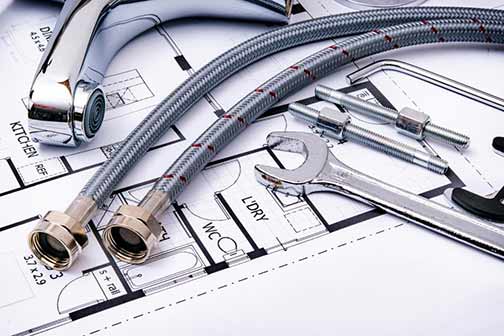
Water with an unpleasant odor is often a sign of an issue that needs to be addressed. These odors can stem from a variety of sources and understanding these potential causes is crucial in determining the right solution. The problem can originate from the plumbing system itself or from contaminants infiltrating the water supply. Identifying the root cause of smelly water is the first step in fixing the issue and ensuring the safety and comfort of your household.
Common Odors and Their Possible Sources
Smelly water can manifest as different types of unpleasant odors. Each distinct smell can give us a clue about its possible source:
- Rotten Egg Smell: This is usually caused by hydrogen sulfide gas, which can be produced in wells or plumbing systems due to decaying organic matter.
- Musty or Moldy Smell: This could indicate the presence of organic matter, bacteria, or molds within the plumbing system or water source.
- Chlorine Smell: A pungent chlorine smell may be a sign of over-chlorinated water, often due to municipal treatment processes.
- Metallic Smell: This can result from high levels of metal contaminants in the water, such as iron, manganese, or copper.
- Sewage Smell: This often indicates a cross-connection or contamination from wastewater systems, potentially posing serious health risks.
Assessing Potential Risks to Health and Plumbing
Determining the causes of smelly water is not just about addressing the unpleasantness; it’s also about mitigating potential health risks. Some contaminants can carry bacteria and other microorganisms that could cause illnesses. Additionally, certain contaminants, such as hydrogen sulfide or high-metal content, can corrode plumbing fixtures and pipes, leading to leaks, property damage, and expensive repairs. As a homeowner, understanding these risks can help you take preventive measures to protect both your health and property.
Well Water vs. Municipal Water Supply
The source of your water can greatly influence the potential causes of smelly water. For those relying on private wells, it’s important to regularly test the water for organic compounds, chemicals, and microbial contaminants. Well water is more susceptible to contamination from surrounding soil, decaying vegetation, and agricultural runoff.
On the other hand, municipal water supplies are treated with chemicals like chlorine to ensure cleanliness and safety. Sometimes, smelly water can occur if these treatment chemicals interact with residual organic matter within the plumbing system. Municipal water issues may require different approaches, such as using entire house filtration systems or point-of-use filters.
Inspection and Diagnosis of Plumbing System
Identifying the problem often starts with an inspection of the plumbing system. This can involve checking for signs of mold, mildew, or standing water that could contribute to bad odors. Professional plumbers might use special diagnostic tools to detect leaks within your plumbing. They can also perform water tests to understand the specific contaminants present. This thorough diagnosis is essential to recommend the most effective remedies for smelly water.
Effective Solutions for Smelly Water
There are several strategies to tackle the problem of smelly water, depending on the root cause identified. Here are some common solutions:
- Water Treatment Systems: Installing filters, such as activated carbon filters, to remove odors and contaminants. For persistent issues, advanced systems like reverse osmosis or distillation might be necessary.
- Regular Pipe Maintenance: Flushing and cleaning the plumbing system periodically to prevent buildup of organic material and bacteria.
- Shock Chlorination: For well water systems, shock chlorination can be an effective method to kill bacteria and eliminate odors.
- Softening Hard Water: If metallic smells are a concern, installing a water softener can reduce the concentration of iron and other metals.
- Addressing Septic Issues: Ensuring that septic tanks are pumped out regularly and maintained to prevent cross-contamination.

Professional plumbers have the tools and experience to diagnose and fix underlying issues accurately, ensuring the safety and comfort of your home environment.
Preventive Measures to Maintain Water Quality
Beyond solving existing issues, it’s important to implement preventive measures to maintain water quality and avoid future problems. Regularly testing water, especially for those using private wells, helps in early detection of any changes in water quality. Homeowners should schedule annual inspections of their plumbing systems to prevent minor issues from turning into significant problems. Additionally, investing in high-quality water treatment systems can provide an added layer of protection and peace of mind.
When to Call a Professional Plumber
While some minor issues can be managed through DIY solutions, certain situations require the expertise of a professional plumber. It is advisable to seek professional help if the following scenarios occur:
- The odor persists despite trying various remedies.
- There are visible signs of damage or corrosion in the plumbing system.
- Water tests indicate the presence of harmful contaminants.
- There’s an increase in health-related symptoms among household members.
- Unpleasant odors are detected in multiple fixtures throughout the home.
Professional plumbers have the tools and experience to diagnose and fix underlying issues accurately, ensuring the safety and comfort of your home environment.
Conclusion: Taking Action and Ensuring Safe Water
Smelly water is more than just an inconvenience; it is often a sign of underlying plumbing issues or contaminants that need to be addressed. By understanding the potential causes, assessing the risks, and implementing effective solutions, homeowners can ensure the safety and quality of their water supply. Regular maintenance, timely inspections, and professional assistance when necessary will help maintain a healthy and comfortable living environment. Remember, it’s always better to address the problem early rather than wait for it to escalate, ensuring your water remains fresh and safe for all household members.



















